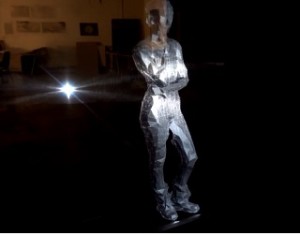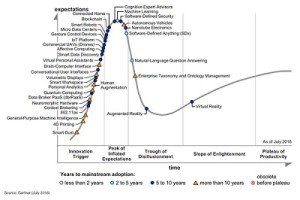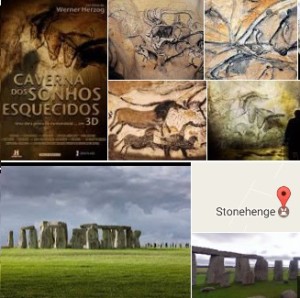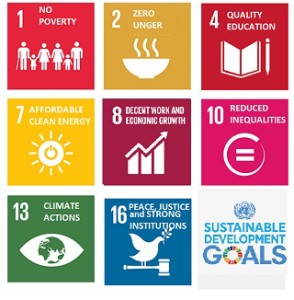
Arquivo para a ‘Tecnology’ Categoria
Kurt Gödel and the computation
The proof that Kurt Gödel formalized for number theory was to be followed by a  document that demonstrated that the same method applied to large formal axiomatic systems in other contexts, the modern approach made by the Turing Machine (it is important to say that it was done almost simultaneously by Emil Post), is a more general proof and touches the problem proposed by David Hilbert originally.
document that demonstrated that the same method applied to large formal axiomatic systems in other contexts, the modern approach made by the Turing Machine (it is important to say that it was done almost simultaneously by Emil Post), is a more general proof and touches the problem proposed by David Hilbert originally.
The proof now written in Gödel’s systems language applied to the particular formalization of number theory and sought to demonstrate that it served formal axiomatic systems, but a concept that could not be determined by the original Gödel document because of the lack of definition Mathematics of an effective procedure of a computational algorithm, or what Turing called the Finite State Machine.
After Alan Turing was able to determine the effective procedure, inventing an ideally idealized computer, now called a Turing machine (also done independently by Emil Post), it became possible to move more generally.
Hilbert’s fundamental requirement for a formal mathematical system was that there was an objective criterion for deciding whether a proof was written in the system language. In other words, there is a more modern proof whether it is the Turing machine, whether it is an algorithm, or a computer program, made for proof checking.
Thus the modern and compact definition of the formal axiomatic system as a recursibly enumerable set of assertions is an immediate consequence of a program that works with a large set of theorem, which by the amount of axioms, if treated humanely, would take an astronomical amount of time, Some proposals were made earlier in LISP (Levin, 1974) and more recently by Gregory Chaitin (1982) when proposing that the Information Theory of Algorithms proposes to work on individual objects instead of sets and probability distributions proposed by Claude Shannon And Norbert Wiener. So the correct question would be (Chaitin, 1982) how many bits are needed to calculate an individual object?
Algorithmic information theory focuses on individual objects, rather than on the sets and probability distributions considered in the information theory of Claude Shannon and Norbert Wiener. How many bits does it take to define how to calculate an individual object? These problems led to Computability theory.
This theory, also called recursion theory, is a branch of mathematical logic that originated in the 1930s with the study of functions computable by Alain Turing, and was studied by Kolmogorov, Chaitin, Levin, Martin-Löf, and Solomonoff. There are numerous papers on questions concerning this theory.
The question of completeness, or NP-complete class, is the subset of NP problems of computational complexity, verifies how any problem in NP can reduce, with a polynomial time reduction, to one of NP-complete problems, by verifying If the problem is computable, in practice, if the algorithm exists.
The holograms arrived
Although they are recent and there is still a lot of technology to become “augmented” realities in our daily lives, the holograms have come down the path that is the fastest to anticipate, the art world.
realities in our daily lives, the holograms have come down the path that is the fastest to anticipate, the art world.
In many recent environments headseats are needed to merge the hologram with the real world, and create what has become known as augmented reality, others use 2D projections or mirrors to trick our brains and see the figures in mid-air, but now the Leap into the future was audacious.
According to artist Joanie Lemercier, he imagined the technique thought in the films Minority Report and the saga Star Wars, to give life to the “no-attainment”, the vision that has of the augmented reality, and to make the visitors of his “installations” enjoy The content in its own perspective without depending on specific equipment, and for the time being, are geometric projections and forms produced in sensing (for example, a human body or an artistic piece), geometric shapes and dynamic movements to entertain the public.
But it uses “traditional” monitoring technologies such as image analysis and depth sensors to make shapes properly designed.
While the industry scenario continues to be sophisticated, this simpler scenario seems to be more effective as it resorts to existing technologies, and by creating virtually human forms (see one of Lemercier’s projections), it seems more effective.
The artist himself predicts that in the very near future, he thinks of using compressed gas and mists with fine particles of water to display projections in an environmentally harmless environment, and that they will be simulating volumetric impressions in immersive environments
Amazon now sell tickets
Amazon again shakes up world markets, now tickets, offers appear both  on the American site and in United Kingdom, traditional ticket sellers are threatened, such as Ticket Master who saw their shares plummet on the American stock market.
on the American site and in United Kingdom, traditional ticket sellers are threatened, such as Ticket Master who saw their shares plummet on the American stock market.
It will take time to get to Brazil, but the future awaits us, what happens is that a series of events and local sales promotion, which means jobs and some money circulating in the places of the events, can be subtracted and generate more monopoly for the A site that initially sold only digital books, is now making headway in other markets.
But traditional event ticket sellers are guilty, the abusive fees they charge for sales can reach 10% at large events and events that quickly deplete tickets, without the assurance that these tickets may fall into the hands of money-changers.
One of the controls that can be observed on Amazon is the limitation of the number of tickets per payers, as they are usually registered in the site this control can be effective, of course unless they use a large number of oranges, but all must be “registered” “.
At the English site for example, you can see the ATP 1000 Nitto Tennis Finals (photo), from November 2 to 18, as well as the GlobeTrotters show, the June 2018 event, the Glastonbury Festival in New Castle, Cardiff, Manchester and Glasgow called El Sheeran which involves music, performances and theater, and many others.
The market will shake, in the stock markets already stirred falling stocks of companies that sell tickets.
IoT and data security
Many aspects of data security have been developed, but there is a maxim of computing that states that no system is totally secure, and if we anticipate an exponential growth of connections to the Internet of Things, it is a fact that the security problem also has a growth In this proportion.
that states that no system is totally secure, and if we anticipate an exponential growth of connections to the Internet of Things, it is a fact that the security problem also has a growth In this proportion.
While the world of IoT has arrived (smartphones, watches, TVs, cars, glasses and other gadgets, we can say that there is a really safe IoT platform with simple operations.
To the experts, one of these basic security features is data encryption, but it must be added to the Big Data treatment, since this for the current data volume is almost indispensable, with IoT being compulsory.
IoT devices transact tons of data, cryptography is already an obvious aspect of these data, but it is still rarely used, let alone if we think from end to end, ie from producer to consumer of data, and so IoT is more gloomy.
With the advancements in quantum computing, cryptography may also not be enough to protect vital data, since quantum computers can discover cryptographic keys even faster, and algorithms though efficient now, there is no totally secure, cryptographic keys with Use of quantum computing will be more quickly opened, and while most hackers do not have access to this level of computing we can be sure, but for how long?
We must begin by rethinking two issues, BigData’s data processing and quantum-computing cryptographic keys before these features are in the hands of hackers.
Privacy data, often vital for certain systems, are and will be in check more and more
Almost La la Land wins
Almost because actresses Warren Beatty and Faye Dunaway erroneously  announced that La La Land: Singing Seasons but the winner with merits was Moonlight: Under the Light of the Moon, The critics darlings had the best actress Emma Stone – La La Land: Singing Seasons And Best Actor Best Actor Casey Affleck – Manchester by the Sea
announced that La La Land: Singing Seasons but the winner with merits was Moonlight: Under the Light of the Moon, The critics darlings had the best actress Emma Stone – La La Land: Singing Seasons And Best Actor Best Actor Casey Affleck – Manchester by the Sea
Best Supporting Actress awards went to Viola Davis – A Boundary Among Us and Best Actor for Mahershala Ali – Moonlight: Under the Moonlight Light, the film also won best screenplay adapted with Barry Jenkins and Tarell Alvin McCraney -.
Best Director, the now highly-rated (winner of two Golden Globes) director Damien Chazelle – La La Land: Singing Seasons, who also won best picture with Linus Sandgren.
Best animated film went to Zootopia and best foreign film for The Apartment, from Iran.
Without much news, with better soundtrack of Justin Hurwitz – La La Land: Singing Seasons stayed with the hours of the night, but Moonlight, excuse the pun took a little the brightness.
Which technologies are emerging
There are several methods of analyzing market trends, stock exchanges like Nasdaq and many of its analysts and brokers are one type, but one highly referenced is the so-called Gartner curve.
like Nasdaq and many of its analysts and brokers are one type, but one highly referenced is the so-called Gartner curve.
The consultants this Gartner or Hypocycle curve, not only targets trend analysis, but mainly: “The Hype Cycle for Emerging Technologies is unique to doing analysis among several sets of HypoCycles, this because it distills insights from more than 2,000 technologies in a concise set of emerging technologies and trends that will have the greatest impact on the strategic planning of certain organizations, “said Mike J. Walker, director of the consulting firm, as reported on the company’s website earlier this year.
According to the analysis of the Gartner Curve, a consulting firm for investors in the area, the virtual reality is the great emerging technology in the year 2016, augmented reality (see Pokemon) is still at the bottom of the can of the process of disillusionment.
Bilding 3D images in medical fields is aplication examples of virtual reality.
Curves between technologies that are considered criticals include 4D Printing, Brain-Computer Interface, Human Augmentation, Volumetric Displays, Affective Computing, Connected Home, Nanotube Electronics, Augmented Reality, Virtual Reality e Gesture Control Devices.
Gartner clients can read more in the report “Hype Cycle for Emerging Technologies, 2016.” This report is part of Gartner’s Hype Cycle Special Report for 2016
Two findings: technology and religion
We must read the history of the present moment backward, that is, in the opposite sense,  although a dose of “desantropomorphization” is always important, that is, to attribute the whole foundation of the concepts studied to man alone, without considering his surroundings; with this the use of technology for its handling.
although a dose of “desantropomorphization” is always important, that is, to attribute the whole foundation of the concepts studied to man alone, without considering his surroundings; with this the use of technology for its handling.
This means that man is what he does with nature and with his fellows around him, the important relation to the Other that the current philosophy emphasizes.
Taking a leap into history, returning to 7,000 BC, we find the Stonehenge monument in central England, and recently (in the 1990s) a cave was found with paintings dating to 30,000 BC, the Chauvet Cave.
Several studies of archeology, Stonehenge is more advanced, point two interesting facts: the technological importance, the stones of Stonehenge were moved by England from Wales, and the religious aspect: it is known that that circle is part of larger circles of Where several inhabitants came for some sort of “religious” rite.
The second discovery is more intriguing, a true art gallery was found in Chauvet, showing an already refined technique of painting and what Werner Herzog called “homo spiritualis” in his film “The Cave of Forgotten Dreams“, the only film allowed Until today of this gallery of prehistoric art.
It is important to know that both English researchers and archaeologists who research Stonehenge (see our post) and Werner Herzog who filmed Chauvet are not religious people, but the realization that there was something “spiritual” on both monuments makes us think.
Man has always lived immersed in a spiritual sphere, which Teilhard Chardin called the Noosphere and used technology, so the anthropomorphic principle is false, we are nature.
Latin America regulate IoT or not
IoT (internet of Things) is there, cars, clocks, medical equipment and other devices  are already on the market, this should grow to the full connection between things that communicate.
are already on the market, this should grow to the full connection between things that communicate.
According to data from the 5G Americas report “Internet de las Cosas en América Latina” (made in the Spanish language), the concern over excessive regulation may impede the business model, while in Brazil, experts point to the contrary: the need for urgent regulation, Who is right?
Both of them, but it takes a matter of common sense, in general in Brazil it regulates to the shape of the pins of the outlet (a joke, but it is true), while abroad the concern is with security and standardization for everyone to adopt similar measures .
The main concern should go to the sense that it takes a lot of attention not to prevent the advancement of a new business model while ensuring more security, but without panic and exaggeration, nothing is totally safe, but of course it is necessary to adopt measures, more Equipment will mean less security.
According to the 5G Americas report, through one of its director José Otero: “The risk of excessive or ill-conceived regulation could delay the enormous growth opportunities in the Internet of Things. For this reason, it is necessary that the entire ecosystem of actors dialogue and collaborate with regulators on this important technological advance. “
According to a Machina Research consultant, Andy Castonguay, if the fragmentation and complexity of the IoT system and its many technological approaches make the deployment a challenge, it will be somewhat dangerous if regulators are prohibitive in their mandates or if they favor Technologies.
One of the main considerations regarding public policies in the sector should be made considering the sovereignty and privacy of information and for security
IT companies and Trump
The companies that employ the most brains and foreign labor are technology companies, and the reflexes of trying to nationalize jobs has already provoked a reaction from most companies.
and the reflexes of trying to nationalize jobs has already provoked a reaction from most companies.
Yesterday several companies had appeared, among them the giants Google, Facebook, Apple and Microsoft, which among other measures vetoed the access of natives of seven Muslim-majority countries to come to the United States, the measure is valid for 90 days and the reaction was World, with manifestation even of some rulers, like of Saudi Arabia.
Executive director Sundar Pichai, whose name already shows nationality, said that Google’s Trump order reaches about 100 employees.
Yesterday Canada, which had a one-time attack on a mosque in this country, was televised to declare support and solidarity with Muslims, as well as their desire to receive migrants who can not enter the United States, in the long run this may even Result in the transfer of some of these companies’ offices to Canada.
The owner of Tesla Elon Musk, companies that have revolutionary innovations with use of solar energy among other bombastic technological changes, which advises the Trump government.
The measure is a great setback, going back to the beginning of industrial capitalism when Adam Smith wrote the classic “Wealth of Nations”, today the raw material, brains and labor are world-wide, and, by the way, states United States was the largest beneficiary, the effect of this backward turnout will result in global backwardness, but also to the world’s largest powerhouse, yet it will immediately affect its trading partners such as Mexico and Canada.
This process is tantamount to de-globalization, as some countries in Europe, such as France and the United Kingdom, are moving in this direction, and Trump’s visit to this country already provokes many demonstrations of unpopularity.
Campus Party Brazil starts tomorrow
The tenth edition of the Campus Party, a concentration of fans, workers,  companies and even thinkers who use a wide space to exchange experiences, products and ideas of the advances of the digital world, takes place at the Anhembi pavilion in São Paulo.
companies and even thinkers who use a wide space to exchange experiences, products and ideas of the advances of the digital world, takes place at the Anhembi pavilion in São Paulo.
This year, there are two waves that are already booming in this environment: the internet of things and sharing, which came out of digital products and went to different areas: toys, temporary rental of houses, availability of parking spaces for travel, etc.
At the main stage where some interesting names are called and others not so much, this year will appear figures such as: Michel Nicolelis (Brazilian who is world name in neuroscience), Camille François (cyber-activist who defends privacy, anonymity, Harvard) and Paul Zaloom, (famous actor in the 90s with program The World of Beakman), and others of course.
Another novelty is the link established with UNDP (UN Development Program), which has 17 sustainable development objectives, in 100 hours will be developed what is called Big Hackathon where projects are proposed and can be undertaken by public or private initiative with Funding shared by the UN.
I highlight among these goals 8 that I consider to be urgent: Eradication of poverty, zero hunger and sustainable agriculture, quality education, clean and affordable energy, decent work and economic growth, reduction of inequalities, global action on climate and peace / justice / effective institutions .
The event starts tomorrow and admission costs $ 240 brazilian reais (around U$ 75).

